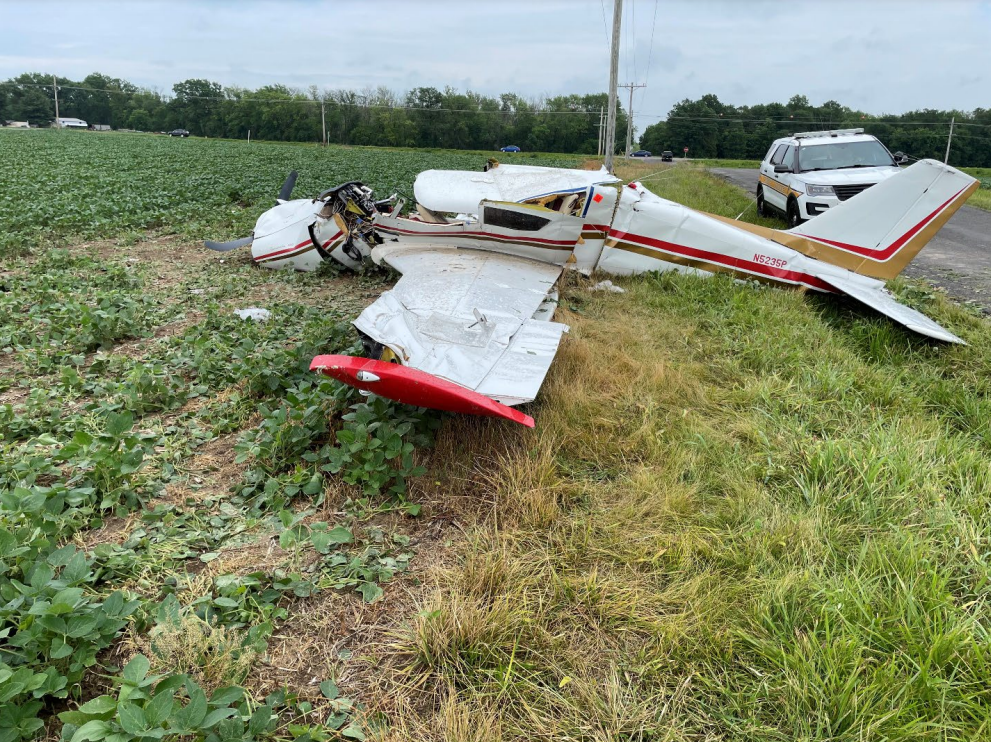
ASN Wikibase Occurrence # 279949
This information is added by users of ASN. Neither ASN nor the Flight Safety Foundation are responsible for the completeness or correctness of this information.
If you feel this information is incomplete or incorrect, you can submit corrected information.
| Date: | Saturday 2 July 2022 |
| Time: | 11:35 |
| Type: |  Piper PA-24-250 Comanche |
| Owner/operator: | Private |
| Registration: | N5235P |
| MSN: | 24-265 |
| Year of manufacture: | 1958 |
| Engine model: | Lycoming O-540 |
| Fatalities: | Fatalities: 1 / Occupants: 2 |
| Aircraft damage: | Destroyed |
| Category: | Accident |
| Location: | near St Jacob-St Louis Metro-East Airport/Shafer Field (IL48), IL -
 United States of America United States of America
|
| Phase: | Initial climb |
| Nature: | Private |
| Departure airport: | St Jacob-St Louis Metro-East Airport (IL48), IL |
| St Jacob-St Louis Metro-East Airport (IL48), IL | |
| Investigating agency: | NTSB |
| Confidence Rating: |
On July 2, 2022, at 1135 central daylight time, a Piper PA-24-250, N5235P, was involved in an accident near St. Jacob, Illinois. The airplane was destroyed. The pilot rated passenger received serious injuries and the pilot was fatally injured. The airplane was operated under Title 14 Code of Federal Regulations (CFR) Part 91 as a personal flight.
The airplane was topped off with fuel on the day of the accident. The airplane was flown to an intermediate airport then back to the original departure airport. After returning to the departure airport, the pilot and a pilot-rated passenger took off to practice full-stop takeoffs and landings. They performed five uneventful takeoffs and landings; during the last takeoff climb, the airplane sustained a loss of engine power. Witnesses reported that the airplane's right wing dropped and the airplane rotated clockwise, as viewed from above, before it impacted the ground.
Postaccident examination of the airplane revealed no useable fuel in the wing's fuel bladder tanks. Both fuel bladders were collapsed and the attachment hardware for the bladder was not properly attached to the wing. Examination of the fuel system revealed that the fuel sending units had bends on their float arms inconsistent with their design and did not meet airplane maintenance manual specifications for resistance values. Additionally, the fuel selector valve did not contain detents for the position of each fuel tank selection. Examination of the engine, engine accessories, and airframe revealed no other mechanical anomalies that would have precluded normal engine operation.
The last maintenance entries that were provided, including the annual inspection, were not part of the airframe and engine logbook(s), and did not show date of maintenance, time-in-service, and signature. Investigators were unable to determine who performed the most recent maintenance of the airplane.
The collapsed fuel bladder would have reduced the fuel capacity when the airplane was last serviced with fuel. The fuel sending units likely provided incorrect fuel tank indications on the fuel gauges in the cabin. The pilot likely would have performed fuel calculations based upon the designed fuel tank capacity. Both the diminished fuel bladder capacity due to the collapsed bladders and the improper fuel level indications likely led to the loss of engine power due to fuel exhaustion.
The pilot had cardiomegaly with left ventricular wall thickening and moderate atherosclerosis in two coronary arteries. He also had asthma and the bronchodilator albuterol was detected in his blood in urine. While these medical conditions can result in a sudden impairing or incapacitating event, there was no evidence that this occurred. The pilot had opportunity to discontinue the flight if he felt ill, he was actively flying the airplane, and there was a pilot-rated passenger aboard who could assist. Thus, the pilot's medical conditions were not a factor in this accident.
Probable Cause: The inadequate maintenance of the airplane fuel system that resulted in fuel exhaustion and a loss of engine power.
Accident investigation:
 |
|
Sources:
NTSB CEN22FA298
https://data.ntsb.gov/Docket?ProjectID=105410
https://flightaware.com/live/flight/N5235P/history/20220702/1429Z/KEYE/IL48
https://registry.faa.gov/aircraftinquiry/Search/NNumberResult?nNumberTxt=5235P
Location
Images:

Photo: NTSB
Revision history:
| Date/time | Contributor | Updates |
|---|---|---|
| 02-Jul-2022 19:45 | Geno | Added |
| 03-Jul-2022 12:46 | johnwg | Updated [Time, Phase, Nature, Source, Narrative, Category] |
| 09-Jul-2022 05:18 | RobertMB | Updated [Nature, Source, Narrative] |
| 27-Jul-2022 20:44 | Captain Adam | Updated [Time, Nature, Departure airport, Destination airport, Source, Narrative, Category] |
| 01-Feb-2024 13:10 | ASN Update Bot | Updated [Time, Operator, Other fatalities, Phase, Departure airport, Destination airport, Source, Damage, Narrative, Accident report] |
| 01-Feb-2024 13:11 | harro | Updated [Other fatalities, Location, Departure airport, Destination airport, Source, Narrative] |
| 05-Feb-2024 20:40 | Captain Adam | Updated [Time, Operator, Source, Narrative, Photo] |
Corrections or additions? ... Edit this accident description
The Aviation Safety Network is an exclusive service provided by:


 ©2024 Flight Safety Foundation
©2024 Flight Safety Foundation